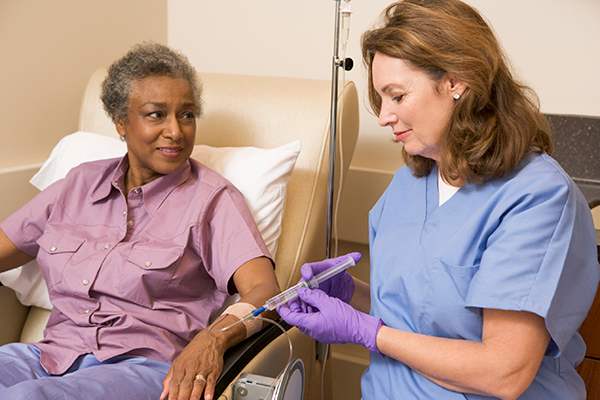ISSUE
One of the most common and potentially life-threatening side effects of chemotherapy is neutropenia and the subsequent development of infections. Infections in cancer patients undergoing chemotherapy may lead to hospitalization, disruptions in chemotherapy schedules, and in some cases, can be life threatening.
WHY IT MATTERS
- Cancer patients who are treated with chemotherapy are more likely to get infections.
- Cancer and chemotherapy can damage the body’s protection system by reducing the number of infection-fighting white blood cells, a condition called neutropenia.
 SOLUTION AND IMPACT
SOLUTION AND IMPACT
CDC is an expert in developing infection control guidelines for healthcare settings and for educating patient groups about how to protect their health. However, CDC did not have federal funding to apply its expertise specifically to infections in cancer patients. Keeping cancer patients healthy is a priority for Amgen. Through a partnership with the CDC Foundation, Amgen provided funding to enable CDC experts in cancer and healthcare quality to address the issue. As part of the partnership, the CDC Foundation considered oncology expertise provided by Amgen.
- Thanks to the partnership, CDC has launched three websites for patients, caregivers and healthcare providers, to help recognize the signs of infection and take action.
- For providers, CDC also developed a Basic Infection Control and Prevention Plan for Outpatient Oncology Settings that outlines infection control policies and procedures—such as injection safety, hand hygiene and environmental disinfection—that can be tailored to any oncology clinic.
- CDC has developed more than 30 types of campaign materials, including fact sheets, posters, infographics and postcards.
- These efforts have had a potential audience reach of more than 300 million people. To date, almost 700,000 campaign resources have been disseminated and an additional 1 million resources have been downloaded.
- As a result of the program, more than 90 percent of outpatient oncology facilities surveyed would adopt some or all of the Basic Infection Control and Prevention Plan, and there has been nearly a 50 percent improvement in cancer patients indicating they received infection prevention education from their provider.
